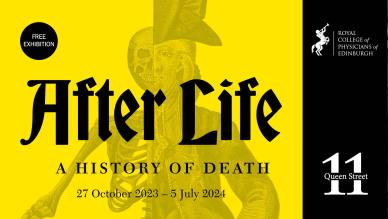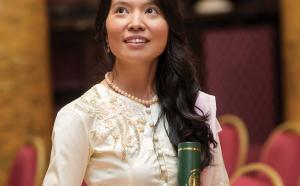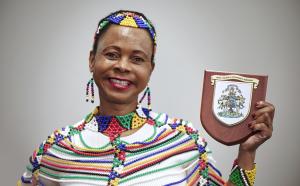

New exhibition “ After Life: A History of Death”
19 October 2023
New exhibition “ After Life: A History of Death” will display Napoleon’s post-mortem report and William Burke’s death mask.
The Royal College of Physicians of Edinburgh will next week launch a new public exhibition, “ After Life: A History of Death” which uncovers changing views of death throughout history. Among the items in the exhibition will be the postmortem report of Napoleon Bonaparte, signed on St Helena, which will be on display to the public for the first time. Also on display will be the death mask of William Burke (on loan from the University of Edinburgh’s Anatomical Museum), a diary documenting the last days of Edinburgh obstetrician James Young Simpson, and a coffin shaped like a police call box, on loan from Crazy Coffins in Nottingham.
The exhibition encourages viewers to consider how the acceptance, and even perhaps fatalism, of the past has given way to an unwillingness to accept death and aims to show how unprepared many of us now are, when our time comes. The illustrations, books and objects displayed in this exhibition show the changing attitudes towards death over the last 500 years.
This is not simply a history of physicians and their role in the death process, although that is an important part of this story. It also explores how we, as humans, have experienced and thought about death through history. The struggle between the many conventions of death – the ‘rules’ or standards people were supposed to follow in dying and in mourning. That is the ‘good’ death, which is to say the quiet, dignified death - and the need amongst all this to be an individual human being and to be able to express that. Additionally, it considers the role of physicians, including Fellows and Members of the Royal College of Physicians of Edinburgh, in changing ideas around death. This includes: our past President Andrew Duncan, who was key in establishing the first forensics university position in the UK; our past President Alexander Monro Tertius, whose post mortem illustrations are on display.
The exhibition has three main themes: memorialising (exploring rituals of remembering, grief and bereavement), the process of dying (examining palliative care and terminal illness) what happens to the body after death (including medical cannibalism, cremation and dissection).
Dr Daisy Cunynghame, Curator of ‘After Life’, said:
Death is a universal experience and one we all understand and engage with differently. Responses to grief vary and ‘After Life’ explores that nuance. From antiquity to the modern day, death resonates with us.
Death is a challenging subject to discuss. We made sure when developing this exhibition that we didn’t just look at this from a medical perspective, but we included personal experiences – both historical and contemporary.







